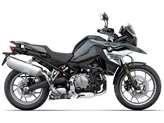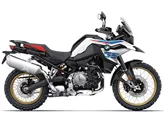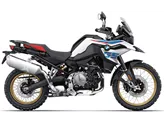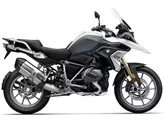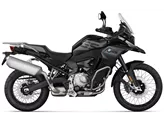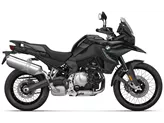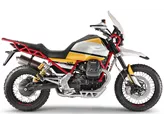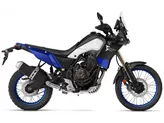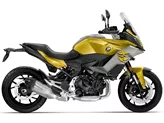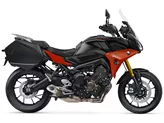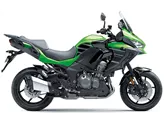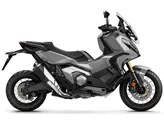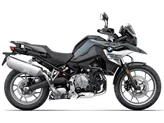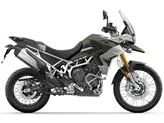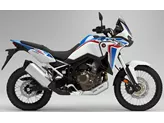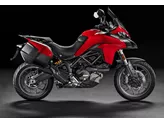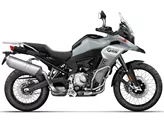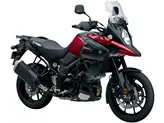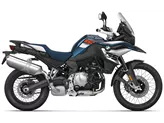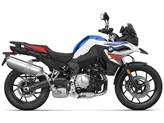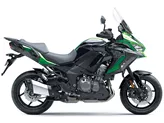Kawasaki Versys 1000 2016 vs. BMW F 850 GS 2018

Kawasaki Versys 1000 2016

BMW F 850 GS 2018
Overview - Kawasaki Versys 1000 2016 vs BMW F 850 GS 2018
When comparing the Kawasaki Versys 1000 2016 and the BMW F 850 GS 2018, it is clear that both motorcycles have their own unique strengths and weaknesses.
Starting with the Kawasaki Versys 1000 2016, one of its main strengths is its sporty look. It has a sleek and aggressive design that appeals to riders who want a visually appealing motorcycle. Additionally, the Versys 1000 offers a comfortable seating position, allowing riders to enjoy long journeys without discomfort.
Another notable strength of the Versys 1000 is its powerful and cultivated in-line four-cylinder engine. With an engine power of 120 HP and torque of 102 Nm, this motorcycle delivers impressive performance on the road. The adjustable windshield is another advantage, providing riders with the ability to customize their riding experience to suit their preferences.
In terms of handling, the Versys 1000 boasts a stable chassis and a well-controlled braking system. This ensures that riders can confidently navigate corners and come to a stop when needed. Additionally, the Versys 1000 offers a clever range of accessories, allowing riders to further enhance their motorcycle to meet their specific needs.

Kawasaki Versys 1000 2016
One of the standout features of the Versys 1000 is its comparatively low price. When compared to other motorcycles in its class, the Versys 1000 offers excellent value for money.
On the other hand, the BMW F 850 GS 2018 also has its own set of strengths. One of the main advantages of this motorcycle is its superior engine. While it has a slightly lower engine power of 95 HP and torque of 92 Nm compared to the Versys 1000, the F 850 GS delivers a smooth and responsive performance.
The F 850 GS also offers an adequate braking system, ensuring that riders can come to a stop safely and efficiently. In terms of seating position, the F 850 GS provides a very good riding position, allowing riders to feel comfortable and in control.
Another strength of the F 850 GS is its easy handling. This motorcycle is designed to be agile and nimble, making it ideal for both on-road and off-road adventures. The extensive range of accessories available for the F 850 GS allows riders to customize their motorcycle to suit their specific needs.

BMW F 850 GS 2018
The F 850 GS also offers various riding modes and traction control, further enhancing the riding experience. These features allow riders to adapt their motorcycle's performance to different road conditions and riding styles. Additionally, the F 850 GS is off-road capable, making it a versatile choice for riders who enjoy exploring different terrains.
However, there are some weaknesses to consider for both motorcycles. The Kawasaki Versys 1000 2016 has a windshield that can only be adjusted when stationary, which may be inconvenient for riders who prefer to make on-the-go adjustments. Additionally, the gear indicator on the Versys 1000 costs extra, which may be seen as an unnecessary expense for some riders.
On the other hand, the BMW F 850 GS 2018 has a disc that is positioned too low, which may affect its performance in certain situations. Some riders also feel that the sound of the F 850 GS could be improved for a more satisfying riding experience.
In conclusion, both the Kawasaki Versys 1000 2016 and the BMW F 850 GS 2018 have their own unique strengths and weaknesses. The Versys 1000 offers a sporty look, powerful engine, and comfortable seating position, while the F 850 GS boasts a superior engine, easy handling, and off-road capabilities. Ultimately, the choice between these motorcycles will depend on individual preferences and priorities.
Technical Specifications Kawasaki Versys 1000 2016 compared to BMW F 850 GS 2018
Pros and Cons in comparison
Pros and Cons in comparison
Kawasaki Versys 1000 2016

The Kawasaki Versys 1000 is not a completely new model - even if it looks like one from the design point of view. The look has been cleverly adapted to the current aggressive Kawasaki line with two pointed headlights and many edges at the front. Technically, on the other hand, it has been cautiously upgraded - but quite sensibly. Two additional horsepower boost the output to 120 hp, which is excellent to ride thanks to the wonderful in-line four-cylinder characteristics. The chassis corresponds to the sporty demands of a Kawasaki, but the ergonomics and comfortable seating position allow for long journeys - just like a big enduro. With useful accessories such as a pannier set, top case, heated grips and additional headlights, the Versys 1000 becomes a serious long-distance tourer - the comparatively low base price makes these gimmicks quite affordable.
BMW F 850 GS 2018

You might not see it at first glance on the new BMW F 850 GS, but it really is a completely new design. Both the steel chassis and the drivetrain have been changed, the engine enlarged to 853 cubic capacity and designed to be even more powerful with the 90-degree crankpin offset. As a result, the new F 850 GS presents itself more sovereign than excited and is convincing both on the road and off-road. The very special thing about the BMW is the ability to tailor it exactly to your personal needs thanks to the extensive range of accessories - there is actually no feature currently available that you can't get on your F 850 GS. However, this also drives up the price.
Price Comparison Avarage Market Price Kawasaki Versys 1000 vs BMW F 850 GS
There are a few key differences between a Kawasaki Versys 1000 2016 and a BMW F 850 GS 2018. In terms of price, the actual average price of a BMW F 850 GS 2018 is about 19% higher. A Kawasaki Versys 1000 2016 experiences a loss of 1,080 USD in one year and 930 USD in two years of ownership. This is offset by a loss of 2,440 USD and 2,760 USD for a BMW F 850 GS 2018. Compared to BMW F 850 GS 2018 there are more Kawasaki Versys 1000 2016 bikes available on the 1000PS.de Marketplace, specifically 7 compared to 5. It takes less time to sell a Kawasaki Versys 1000 with 88 days compared to 112 days for a BMW F 850 GS. Since model year 2012 1000PS.de editors have written 19 reviews for the Kawasaki Versys 1000 and 31 reviews for the BMW F 850 GS since model year 2018. The first review for the Kawasaki Versys 1000 was published on 11/7/2011 and now has more than 8,400 views. This compares to more than 69,800 views for the first review on BMW F 850 GS published on 11/21/2017.


